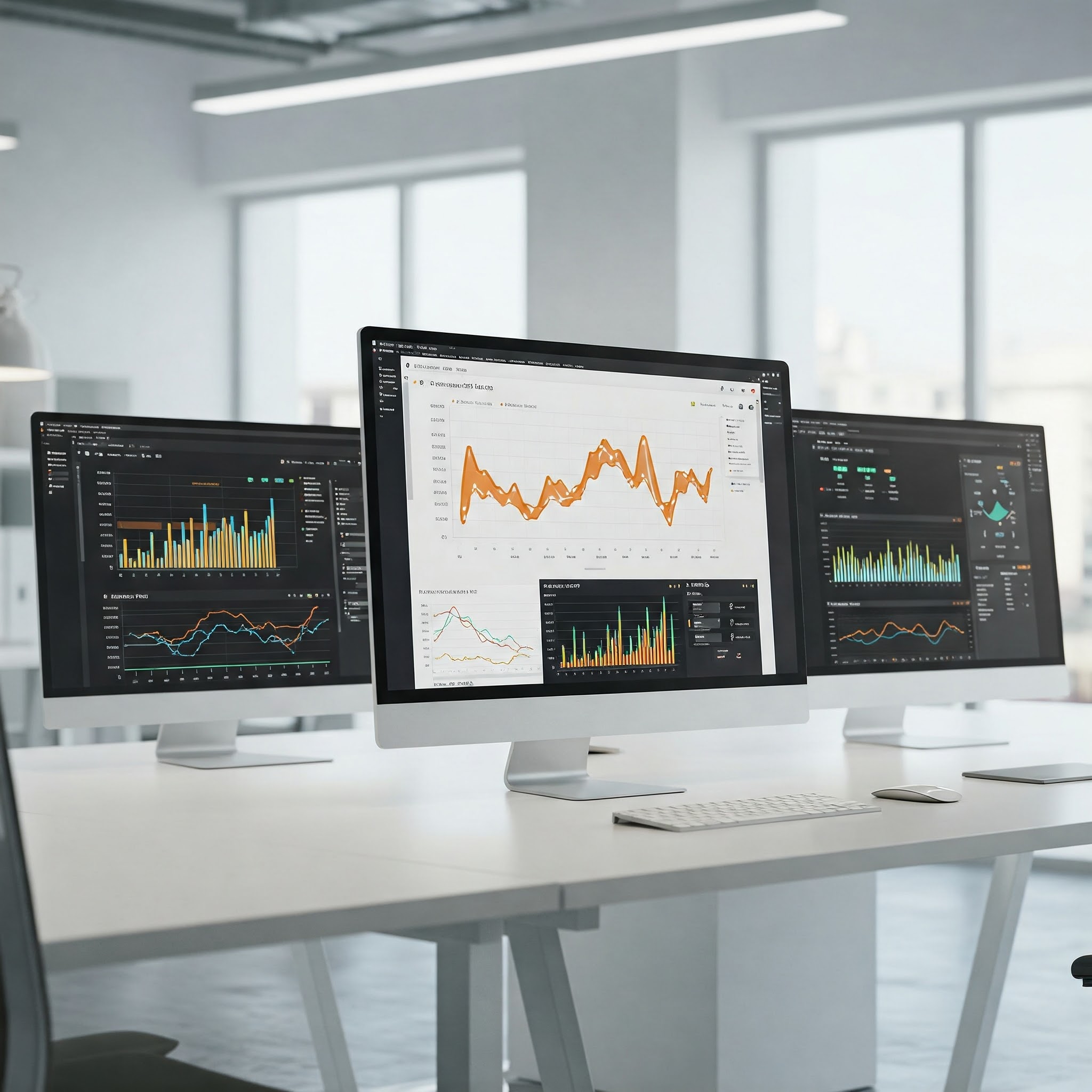Analyzing Big Data:
A Head-to-Head Comparison of Looker Studio, Power BI, & Tableau
Published on

In today's data-driven world, the ability to analyze large datasets and identify meaningful trends is crucial for business success. When it comes to Business Intelligence (BI) tools capable of handling big data, Looker Studio (formerly Google Data Studio), Microsoft Power BI, and Tableau are three leading contenders. This post provides a head-to-head comparison of these platforms specifically for analyzing big data and responding to queries about noted data trends.
Looker Studio Strengths for Big Data Analysis
- Connectivity to Google Ecosystem: Seamless and free integration with Google BigQuery and Google Cloud Storage.
- Cost-Effectiveness: Entirely free to use.
- Ease of Use (for Google Users): Intuitive interface for those familiar with Google products.
- Live Connections: Primarily works with live queries to data sources.
- Handling Large Datasets: Capable of handling significant data volumes, especially with powerful data warehouses like BigQuery.
Looker Studio Considerations for Big Data Analysis
- Performance Limitations: May be slower than Tableau for complex transformations and visualizations on extremely large datasets.
- Fewer Advanced Analytics Features: Limited built-in advanced statistical analysis and machine learning capabilities compared to Power BI and Tableau.
- Visualization Limitations (Compared to Tableau): Fewer visualization options and less extensive customization.
Responding to Queries about Noted Data Trends with Looker Studio
- Interactive dashboards with drill-down and filters.
- Real-time data through live connections.
- Creation of calculated fields for further analysis.
- Potential integration with Google Cloud AI services for advanced insights.
Microsoft Power BI Strengths for Big Data Analysis
- Integration with Microsoft Ecosystem: Seamless integration with Azure Synapse Analytics, Azure HDInsight, and Data Lake Storage.
- Cost-Effectiveness: Lower entry price point compared to Tableau.
- DirectQuery and Composite Models: Options for live connections and combining import/live data for optimization.
- Power BI Premium: Enhanced capabilities for massive datasets, including larger sizes and dedicated capacity.
- AI-Powered Features: Built-in AI features like "Quick Insights" and natural language querying ("Ask Data").
Microsoft Power BI Considerations for Big Data Analysis
- Performance can depend on the DirectQuery setup and underlying data source.
- Steeper learning curve for advanced DAX calculations.
Responding to Queries about Noted Data Trends with Power BI
- User-friendly interface for creating interactive reports and dashboards.
- Integration with Q&A for natural language queries about data trends.
- "Quick Insights" feature for automated trend identification.
Tableau Strengths for Big Data Analysis
- Performance with Large Datasets: Generally recognized for strong performance with very large datasets.
- Data Connectivity: Wide array of robust data connectors.
- Data Exploration: Intuitive drag-and-drop interface excellent for discovering patterns.
- Live Querying: Robust ability to perform live queries.
- Scalability: Tableau Server offers scalability for growing data and users.
- Advanced Visualization: Highly customizable and sophisticated visualization options.
Tableau Considerations for Big Data Analysis
- Higher cost, especially for enterprise deployments.
- Steeper initial learning curve for some users.
Responding to Queries about Noted Data Trends with Tableau
- Creation of sophisticated and highly customizable visualizations to highlight trends.
- Intuitive drag-and-drop for ad-hoc analysis of observed trends.
- Powerful filtering and drill-down capabilities.
Head-to-Head Comparison for Big Data Analysis and Trend Queries
| Feature | Looker Studio | Microsoft Power BI | Tableau |
|---|---|---|---|
| Big Data Handling | Good, especially with Google Cloud; relies on underlying source. | Good, especially with Power BI Premium and Azure. | Excellent, known for performance with large data. |
| Data Connectivity | Strong with Google services; wide range of other connectors. | Excellent, especially within the Microsoft ecosystem. | Excellent, broad range of connectors. |
| Cost | Free | Lower entry cost; Premium tiers for scalability. | Higher cost, especially for enterprise use. |
| Ease of Use | Relatively easy, especially for Google users. | Generally user-friendly, especially for Excel users. | Steeper learning curve, but powerful interface. |
| Advanced Analytics | Limited built-in. | Strong AI-powered insights. | Good analytical capabilities. |
| Visualization | Good, but less extensive customization than Tableau. | Good range of visuals; customizable. | Highly advanced and customizable visualizations. |
| Live Querying | Primarily live connections. | DirectQuery option available. | Live connections available. |
| Responding to Trends | Interactive dashboards, real-time data, calculated fields. | Interactive reports, Q&A (natural language queries). | Interactive dashboards, drill-down, advanced visuals. |
| AI/ML Integration | Relies on integration with Google Cloud AI services. | Built-in AI features ("Quick Insights"). | Less natively integrated; often relies on external tools. |
Conclusion
Choosing the right BI tool for analyzing big data and responding to trend queries depends on your organization's specific needs, existing infrastructure, budget, and the technical expertise of your team. Looker Studio is a compelling free option, especially for Google Cloud users. Power BI offers a strong and cost-effective solution with good integration within the Microsoft ecosystem and built-in AI features. Tableau remains a powerful choice for its performance with massive datasets and advanced visualization capabilities, though it comes at a higher cost.
Home → / Blog →Disclaimer: This content is for informational purposes only and not professional advice. Please consult with a qualified expert for advice specific to your situation.